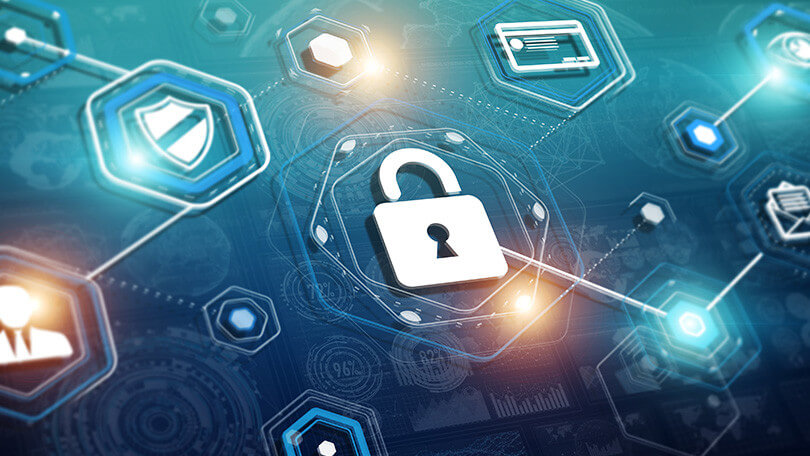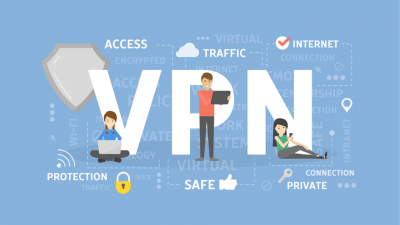
What is a VPN?
Before we start, let’s briefly mention what exactly VPN is. A virtual private network (VPN) is the means of protecting Internet user’s sensitive data and identity. A VPN is a network that requires authentication before it can be accessed: when a user gets connected to it, a sort of “tunnel” is created. This “tunnel” establishes secure communication between the computer and the network, which means users from the outside cannot see the data that is being passed there. This data is encrypted, so even if hackers want to penetrate this channel that will be very challenging for them. For the same reason, it’s highly recommended to use VPN for public Wi-Fi connection in cafes, hotels, libraries, and so on.
VPN servers are being exploited when Internet users’ IP addresses are blocked in some websites, or the access to websites is limited by provider/country authorities/etc. To top it off, VPN service can be used within company infrastructure to connect its members and preserve the security of mission-critical corporate information.
How to use a VPN: Basic Steps
If you’re concerned about the above-mentioned problems of personal security and access, you definitely need to learn how to use VPN. This step-by-step instruction will not only teach you how to use VPN on Windows, the most widespread platform but will guide you through the process of connection establishment on any other device.
Select a service
 The market is full of different offers starting from free solutions and finishing by premium VPNs jam-packed with extra features and tens of servers provided. Both variants have their advantages, and the choice should mainly depend on what portals and sources you want to access. For instance, millions of users from all over the world wonder how to use Netflix with VPN, as well as BBS iPlayer services: for that purpose, you don’t need an advanced VPN service with a bunch of functions. You can easily go with a free VPN and access the services. However, if you’re involved in something more serious and want to hide from governmental surveillance and digital data trackers, opt for a paid service.
The market is full of different offers starting from free solutions and finishing by premium VPNs jam-packed with extra features and tens of servers provided. Both variants have their advantages, and the choice should mainly depend on what portals and sources you want to access. For instance, millions of users from all over the world wonder how to use Netflix with VPN, as well as BBS iPlayer services: for that purpose, you don’t need an advanced VPN service with a bunch of functions. You can easily go with a free VPN and access the services. However, if you’re involved in something more serious and want to hide from governmental surveillance and digital data trackers, opt for a paid service.
Here’s what you should keep in mind:
- Avoid services that add extra toolbars, third-party advertisements on the websites you open or implement the third-party application.
- Worthy free VPN services include TunnelBear, VPN Gate, and Starter VPN. The majority of free services have data limits (they charge you for downloading more data).
- VPNs can work on Windows and MAC PCs, smartphones, and tablets.
Download and install software
As soon as you’ve chosen a service, navigate to its official website and download the corresponding version for your operating system. If this is a paid solution, you will need to register and pay ahead for the services.
How to use a VPN on a smartphone or tablet? Note that many modern services provide mobile VPN solutions for iOS and Android. If you’re using your smartphone, you will surely find a mobile version of VPN in the app store to download it directly on the device.
Once you’ve done with downloading, install the software the same way as you do with other programs and games. Some VPNs like CyberGhost can be used without creating an account, while others require signing up using your email address. On Mac OS, you will need to launch the .dmg file and install the software in Applications folder (password input will be required). How to use VPN on Windows then? Typically, you will need to open a .exe file and follow the instructions. On a smartphone, you will simply launch the app from your home screen and create an account.
Launch the app
Now when the preparations are over you need to know how to use VPN software itself. Launch the program (it will be in Taskbar or Program menu on Windows PC, or in Applications on Mac) and follow the instructions provided further. Some services (for instance, CyberGhost) are a piece of cake in use: you just need to click one button in the center of the interface. Others require setting up an account. If you’re using a paid version, you will surely need to create an account.
Upon activating your VPN service, specify the parameters: choose a server and location, if needed, let the software automatically connect you upon the startup of the device. You can either let VPN connect to servers randomly, or may choose the country to browse from. For instance, if you’re located in France, and want to visit Americal Netflix website, select a US server. Therefore, with a VPN, you’ll be able to access the websites that are not available in your country.
How to use a VPN, if your provider hinders the connection? There’s an option called “TCP Overrides” that makes VPN use a TCP (transmission control protocol) that is more reliable, but sometimes slower. Anyway, TCP Overrides allows establishing a connection with almost any website.
Pro Tips
The process of downloading a service and establishing a connection is simple, but you should know a few more details to use a VPN like a pro.
How do I know my VPN actually works?
If a VPN server is suddenly disconnected, your connection can be disrupted without you noticing that, which means no protection. To make sure that things work properly, go to Browser SPY’s Geolocation page – it will show your IP address location. It should be exactly the location of the server you use instead of your actual location. If it is so, your VPN is working normally.
How to use VPN on Windows 10?
My Private Network is a great service for this purpose. Go to Network Settings and click “Add a VPN Connection”. You will need to specify the connection name MPN GBR and select the server name gbr.myph.co. If you need to access to another server, change the connection and the server name (the list of the servers is given on the official website). You will need to create a login and password and click on Connect button.
Now you know how to use VPN on different devices to keep your sensitive data totally protected. Installing a VPN is a 5-minute affair that can save your privacy and provide access to almost any website.